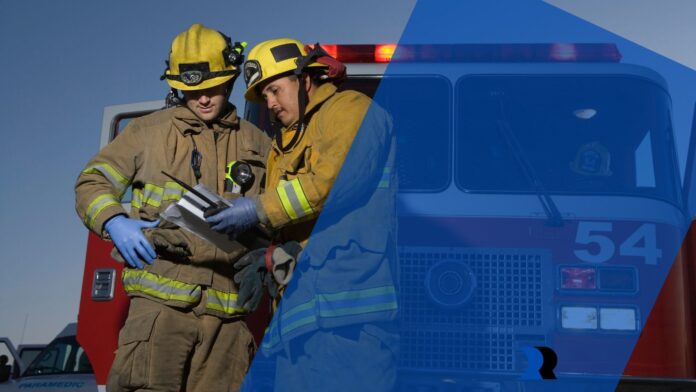Can a firefighter see through smoke to save lives? Could a paramedic gain instant expertise in a life-threatening crisis? What if police officers could train for high-risk scenarios without any real-world danger? These questions might sound like the stuff of science fiction, but they are rapidly becoming a reality when public institutions decide to cooperate with an augmented reality development company.
As we delve into AR and its burgeoning role in public safety, we uncover a future where the line between human capability and technological aid blurs, creating a new paradigm of emergency service and disaster response. But how does this technology work in the heat of the moment? And what are the real-world implications for those on the front lines? Let’s explore how augmented reality development companies can enhance public safety operations.
Applications of AR in Emergency Services
Contrasting the past with the present offers a stark revelation of AR’s transformative role in emergency services. Once first responders relied on static, often outdated information, today’s AR technology provides dynamic, real-time data crucial for life-saving decisions. Here’s how AR is being applied in the field:
- Navigation and Situational Awareness: AR headsets can project maps and building layouts into the user’s field of vision, allowing firefighters to navigate through smoke-filled environments or paramedics to find the quickest route to a patient.
- Training and Simulation: AR creates immersive training environments, simulating natural disasters, terrorist attacks, or medical emergencies for responders to practice their skills in a realistic but controlled setting.
- Information Overlay: Critical information, such as the location of hazards, structural integrity of buildings, or vital signs of a patient in distress, can be overlaid onto the real-world view of responders, providing them with actionable intelligence on the spot.
- Victim Assistance: AR can assist trapped or injured individuals by providing visual instructions for self-help or guiding them to the nearest exit point, all while the rescue team is en route.
These applications are just the tip of the iceberg, as ongoing research and development promise to expand the capabilities and effectiveness of AR in emergency services even further.

Why Do We Need AR For Emergencies?
How can augmented reality redefine the effectiveness of public safety operations? The benefits are substantial and multifaceted:
- Enhanced Decision-Making Capabilities: AR provides instant access to critical information, allowing for rapid assessment and informed decisions, which is crucial during the golden hour of emergency response.
- Improved Safety for First Responders: By superimposing vital data such as the structural integrity of buildings or the presence of hazardous materials, AR ensures that first responders can anticipate and avoid potential dangers.
- Faster Response Times: AR aids in swiftly navigating complex scenes, ensuring that help arrives where needed most, without delay, thus saving precious minutes in life-threatening situations.
- More Efficient Resource Management: With AR, command centers can track and manage resources in real-time, ensuring optimal deployment and utilization of personnel and equipment.
- Increased Accuracy in Emergency Response and Risk Assessment: AR enhances the precision of risk evaluations by providing a layered view of emergencies, leading to targeted and effective response strategies.

The Main Considerations in The AR Adoption For Public Safety
While the integration of augmented reality (AR) into public safety heralds many benefits, it also brings challenges and considerations that must be addressed:
- Technical Limitations and Infrastructure: The efficacy of AR depends on advanced computing power and reliable connectivity. AR systems may face limitations in remote or damaged areas where infrastructure is compromised.
- Privacy and Data Security: The use of AR involves the processing of potentially sensitive data. Ensuring individuals’ privacy and data security against breaches is paramount, necessitating stringent cybersecurity measures.
- User-Friendly Design: AR interfaces must be intuitive, especially in high-stress scenarios where emergency personnel require quick, clear information without additional cognitive load.
- Integration with Existing Protocols: AR tools must seamlessly integrate with current emergency response protocols and communication systems to enhance, rather than disrupt, established procedures.
- Interoperability with Multiple Devices: AR systems must be compatible with various devices and platforms used by different agencies to ensure a cohesive response during multi-agency operations.
- Physical and Cognitive Overload: There is a risk that an overload of digital information could distract users or obscure their physical environment, potentially leading to errors or accidents.
Summing Up
The advent of augmented reality in public safety is poised to usher in a new era of enhanced emergency response. As we navigate the complexities of its implementation, the potential for AR to save lives and protect first responders is clear. However, the journey is peppered with challenges that demand innovative solutions and steadfast resolve. Looking ahead, we can predict that with the maturation of AR technology and the resolution of initial obstacles, AR will become an indispensable tool in the public safety arsenal, revolutionizing how we respond to crises and safeguard our communities.


